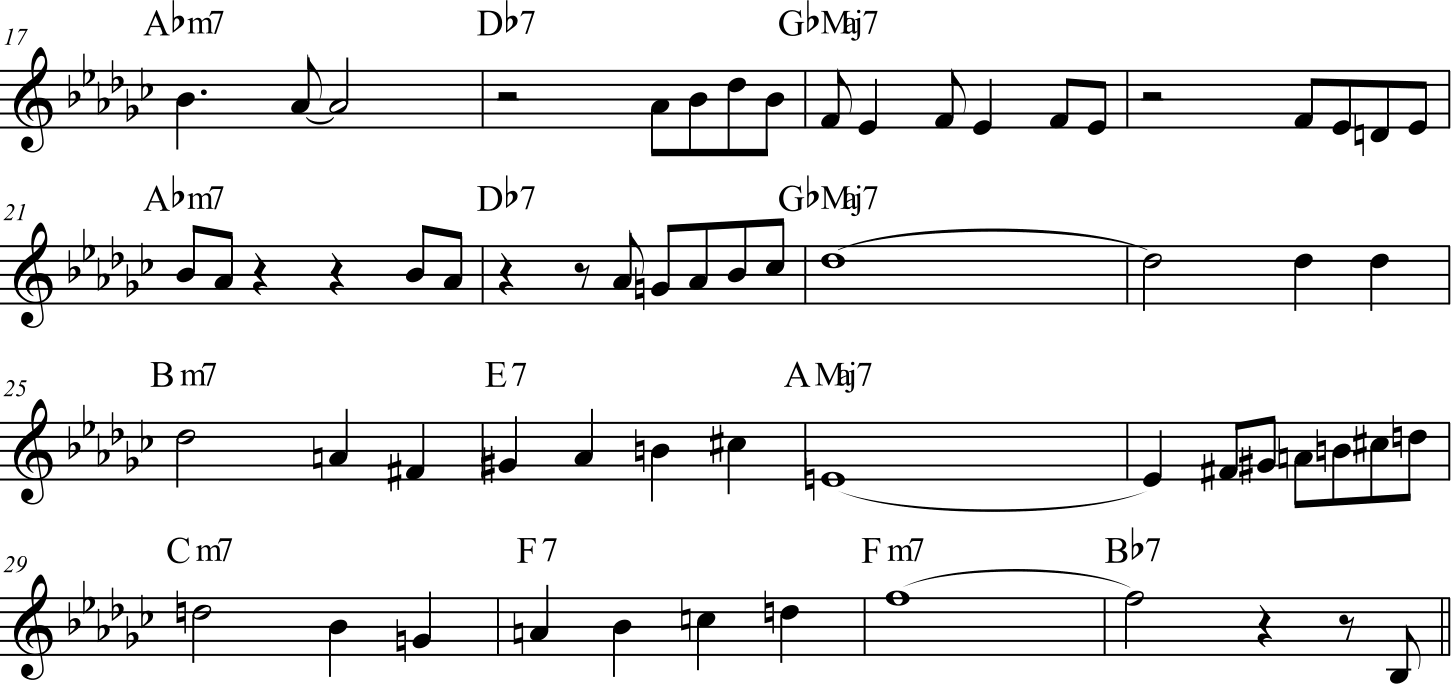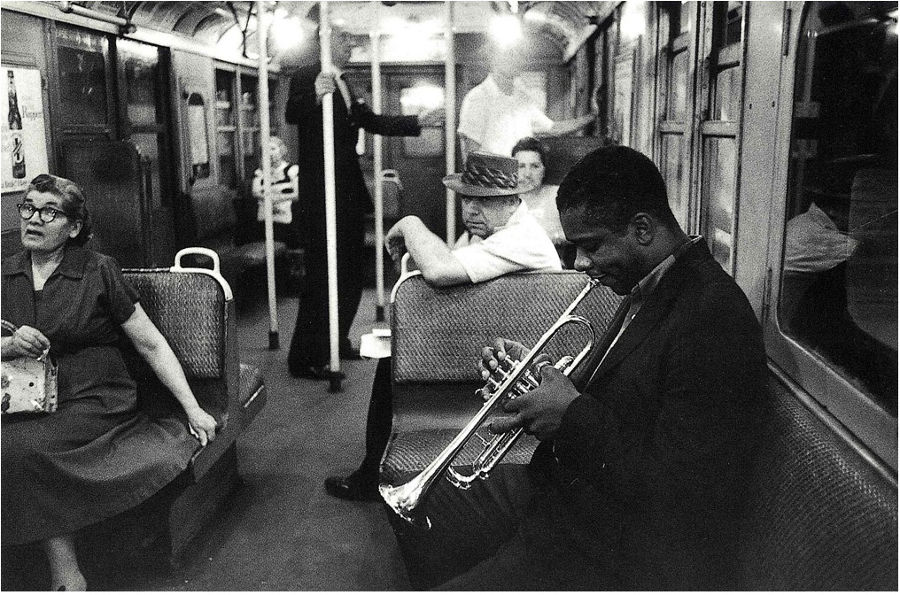[Monday Notes no.54] Donald Byrd was one of the most important trumpet players of the hard bop period. In his composition Ghana, the trumpeter leads the most typical of ensembles, the jazz quintet consisting of trumpet, saxophone and rhythm section.
Ghana has a rhythm halfway between latin and afro, percussions play an important role and are up front all the time. The piece opens with a pedal, an interesting bass line:

The song structure is AABA, the A parts consist of 8 bars, the first four on a single chord E♭m which is followed by a progression by fourths A♭-D♭-G♭-B.

Part B touches on the tones of D♭ and A, before returning to E♭m. The duration of this section is 16 bars, so the chorus has a total duration of 40 measures (8+8+16+8).

The first solo is by the trumpet player and band leader Donald Byrd (1’16”) and lasts 2 choruses. This is followed by pianist Duke Pearson (2’42”) and Hank Mobley on tenor sax (4’02”), also playing two choruses each.
In addition to standing out for his “melodic” participation in the ensemble, with his responses to the theme, drummer Lex Humphries also performs a real improvisation (5’25”); the intervention lasts exactly 40 measures, which is the duration of the chorus.
A peculiarity of this composition is the multiplicity of styles. The rhythm changes between Afro-Caribbean thematic expositions and jazz solos; also from a harmonic point of view the piece presents an alternation between modal parts (on the E♭m7 chord) and tonal areas which are more typical of the bebop language.
Ghana by Donald Byrd is therefore an excellent example of the stylistic variety typical of the hard bop period, in which jazz often integrated rhythms with an African or Caribbean flavor.
Until next Monday!
Download the lead sheet of Ghana


